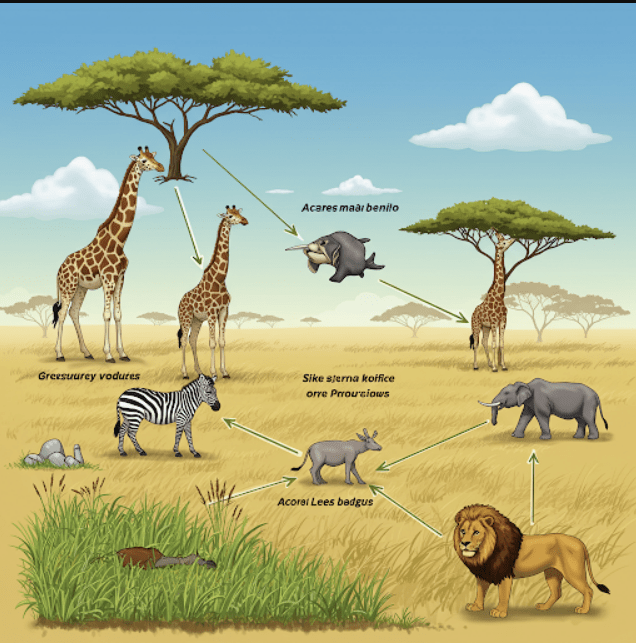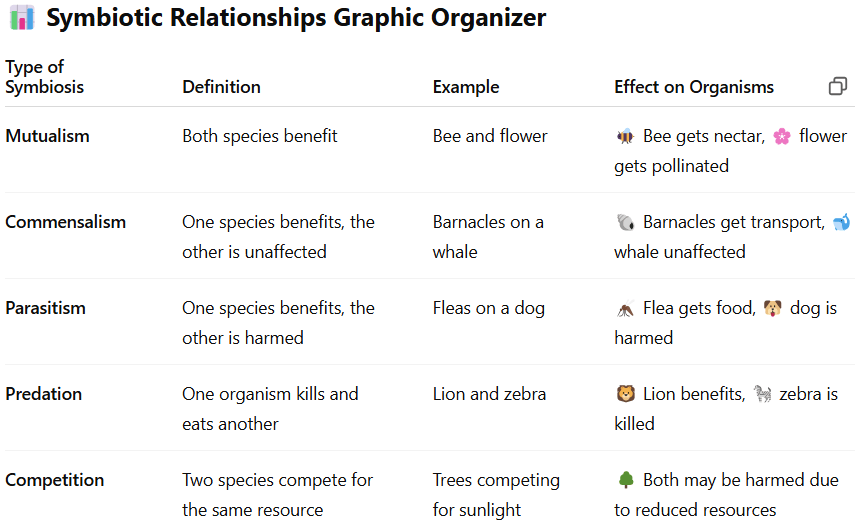What does a trophic pyramid show?
The amount of energy that moves between levels/ How much energy is required to support organisms at various levels.
What is a decomposer?
Any organism that breaks down dead plants/animals (and returns some nutrients to the environment in the process.)
Which symbiotic relationship is beneficial for both organisms?
Mutualistic (mutual, mutualism)
What does a food web show?
The flow of energy from one organism to the next.
When I was asked, "What trophic level is the barn swallow at?" I got the answer:
"Since barn swallows feed on insects, which are primary consumers (they feed on plants or decaying organic matter), they occupy the third trophic level as secondary consumers."
Is this correct? Why or why not?
Yes. The explanation given is correct.

If an organism is a primary consumer, in which trophic level would we expect it to be?
Second trophic level.
First level has producers.
Second level has primary consumers.
What is an autotroph?
An organism that makes its own food from sunlight.
Which type of symbiotic relationships have one organism that is helped and one that is hurt?
Parasitic (parasitism)
What is the original source of almost all energy in most ecosystems?
The sun
Is this an accurate food web? Why or why not?
- Zebras eat grass, not whatever animal that is.
- This says that lions eat elephants, which we know they do not.
- There is a made up animal between trees and giraffes, which says the giraffes eat that animal (but they actually only eat the plants.)
Which two trophic levels would you expect to find an omnivore (animal that eats plants and other animals) in?
An omnivore is likely a primary consumer and a secondary consumer, so we would expect them to be in the second and third trophic levels.
What do we call an organism in the highest trophic level?
An apex predator

Which type of symbiotic relationship has one organism that is helped and one organism that is unaffected?
Commensalistic (commensalism)
If a trophic level has 150,000 kcals of energy, how much energy would be transferred to the next level? (You can give me the percentage or the number)
10% (15,000 kcal)
When asked, fill in the blank, "A [blank] is a plant or animal that has a disproportionately large influence on its ecosystem." I got "The answer to your question is keystone species."
Is this correct? Why or why not?
Yes. A keystone species affects more organisms within the ecosystem than most other organisms would.
What is the highest level you would expect to see in a trophic pyramid and why is there a limit to how many levels can be in the pyramid?
Looking for either 4 or 5- student has to say that the environment can't support higher levels because of how much energy is lost between trophic levels.
What is carrying capacity?
The number of organisms an environment can keep alive.
In a relationship between a bee and a flower, the bee gets food and the flower gets help with reproducing. What type of symbiotic relationship does this show?
Mutualism- both organisms benefit.
How much energy would have to be produced by plants in the first trophic level (per day) to provide enough energy for a horse that requires 15,000 kcals per day?
150,000 kcals because only 10* of those 150,000 kcals would make it to the horse.
(15,000 X 10 = 150,000)
When asked "Is venom a symbiotic relationship?" AI responded, "No, venom is not a symbiotic relationship. "
Is AI correct? Why or why not?
Yes- AI is correct because venom is a form of predation, and predator-prey relationships are not symbiotic.
Students may also respond no if they validate that the Marvel Symbiote "Venom" is indeed a parasite/commensalist relationship with its host.
What is the difference between a food web and a trophic pyramid?
Trophic structures show how much energy moves between levels, while food webs focus on the specific source of energy for each organism involved to see how different organisms affect eachother.
What is the difference between a food web and a food chain?
Food chains show one possible chain of relationships between single organisms, whil food webs are more accurate and complicated, showing how food chains are interconnected with some animals having multiple prey and multiple predators
We discussed two relationships that are not symbiotic, explain one of them.
Predator/prey- One organism kills and eats the other
Competition- Both organisms need the same resources

If grass produces 10,000,000 Kcals of energy, and only 10,000 kcals of energy are available at a bird's level, would you expect that bird to eat bugs or smaller birds? Why?
Smaller birds.
If the bird ate bugs, we would only move up 2 trophic levels (producer to bug to bird would have 100,000 kcals of energy) but if the bird eats smaller birds, we have to go up 3 trophic levels (producer to bug to small bird to big bird) where we now have 10,000 kcals remaining.
AI was asked to "Make a graphic organizer for symbiotic relationships "
Is this correct? Why or why not?

No- predator and competition relationships are NOT symbiotic.